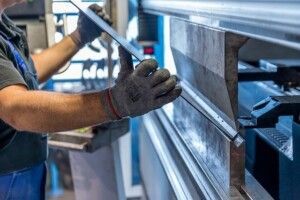Mindset, Metrics, and Reflection: Making a Sustainable Factory Operation

Sustainable manufacturing is a hard thing to achieve right now because of the variety of issues posed by the industry; namely the fact that the entire industry needs altering from the top down, but there are things that we can all do on our own merits in our own factory operations, including the following.
Focusing on Making the Sustainability Shift Accessible
There are opportunities for changes to be made in every sector along the supply chain, and this is why we have to make the shift more accessible by incorporating the following:
Working with organizations that have the same mindset
It’s important for you to address your carbon profile as a starting point, but you also need to look at the organizations you work with to see if they have the same approach. It’s important to ensure that, whether it’s industrial cleaning services or suppliers, they need to have a similar outlook to you. It’s not something that we should take for granted, because not every organization has a sustainability mindset. In fact, many will only want to keep themselves afloat. Therefore, we need to recognize that sustainability is something that may take a long time to implement properly, but starting with a solid baseline for ourselves is one of the best practices.
Because when we need to provide proof to clients that we are sustainable this means that we will invariably find similar companies with the same sort of outlook.
Incorporating better execution
Developing sustainability initiatives and incorporating new roles within the organization may be essential. When you are trying to determine the best traits that the company can deliver, as far as sustainability is concerned, you can capitalize on any new capabilities. In the manufacturing industry, there will be a need to bring other partners together. From regulators to third-party providers, everybody will need to increase their sustainability approaches. It’s vital that we measure the metrics on a regular basis which can then provide proof to other providers that we are serious about sustainability.
A Clear Period for Reflection
Many manufacturers can do more than just measure their sustainability metrics; there are opportunities to create a solid narrative about what they are working towards. Because sustainability is not just about doing it for the sake of sustainability anymore, but it’s for the benefit of third-party providers and clients, ensuring that you can provide a great story around the positive impacts on sustainability so consumers and investors will align with your business is so important. Because it’s not just about ensuring you have a sustainable power supply or a practice that is going to help the planet; the fact is that if you are going to maintain your business you’ve got to show everybody else that you are doing something different. Profit is still important in the world of sustainability. When we are focused on developing a sustainable factory operation, we’ve got to be in it for the long haul. It’s not an easy thing, but through mindset, metrics, and a solid approach to reflection we can get there.


